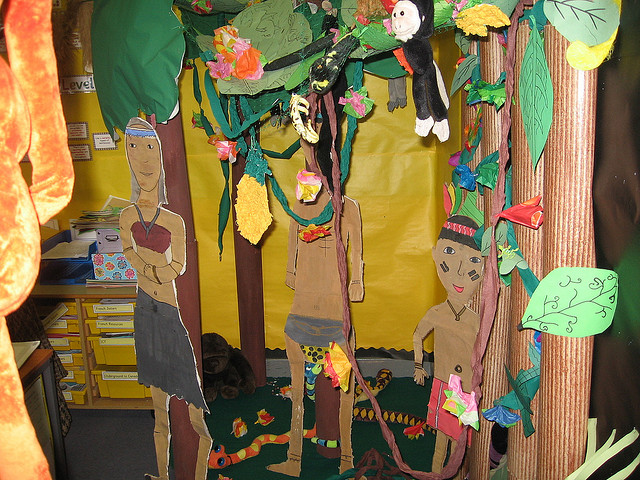As a teacher, decorating your classroom can be one of those ‘marmite jobs’ that you either love or hate, depending on how much time, materials and wall space you have to work with.
Planning your classroom décor is also a consideration that has to be taken into account, not just at the start of the school year, but also on a termly basis, in order to keep the displays fresh and relevant to the areas you’re studying.
There are many reasons why putting a good deal of thought into your classroom decoration will benefit your pupils. This post will explain some of these reasons and give tips on how you can best display the work of your students within the teaching space.
How to Use Classroom Décor
Classroom decoration can aid your pupils in the following areas;
- Create awareness of a subject and help remind pupils of the lesson material you have already covered in class.
- Remind children of the school rules and regulations, so that all pupils are clear on what behaviours are appropriate, which thus creates an uplifting and supportive atmosphere in the classroom.
- Decoration creates a more dynamic and creative space which can stimulate the pupils’ imagination.
- For the pupils, seeing their best work on the board motivates and encourages them to try their best in all lessons.
- Boards can also be used to record and display ‘works in progress,’ so pupils can visually track how their project is coming along. For example, if as a class you were hatching some chickens’ eggs, then you could post updates to the board that the whole school can follow.
- You can also use notice boards to track your pupils’ rewards in classroom attainment and good behaviour. Seeing a visual reminder of their progress will act as an encouraging signal to the students to ‘keep up the good work.’
Tips for Displaying your Pupils’ Work
As satisfying as using a staple gun is – what with all the pressing down on the lever and then the ‘click’ of the staple as it pierces through the sugar paper and corkboard, you can’t beat it – simply grabbing some of your pupils’ work and affixing it the walls in a slapdash fashion will do no good. Here are some tips for making effective classroom displays;
- If you are a primary school teacher or only teach a small number of pupils, then you need to include at least one piece of work to display from each pupil. For this you may want to divide the class into groups and take the best work from several projects. Or you may want to keep a dedicated space on the wall for every pupil and change the work that is displayed there on a regular basis.
- Don’t forget to always make sure that you can see the pupils’ name on the work in a reasonably sized typeface, so that people can see from a few metres away who the featured author or artist is. Get the pupils to label every piece with their name on the back and then you can chose to either copy these names out neatly onto the front, or get the pupils to create a selection of their own nametags for you to use instead.
- You don’t just have to stick to your allotted bulletin boards to transform your classroom into an inspiring learning environment, there are many other places to display work and decorate. For instance, the windows and windowsills can have themed borders added by using coloured tissue paper. Mobiles or streamers can be attached to the ceiling (careful not to make them too heavy or placed in areas where they could fall directly onto a pupil’s head). Items and models can be displayed along the tops of cupboards, shelves and other hard-to-reach places. The backs of doors are another convenient place that can be dressed up easily. Lines of string with decorated clothing pegs can also work as a means for displaying work, and if you are worried about leaving marks on the walls, there are many hooks and removable hanging strips available from home stores that can be removed cleanly, leaving no trace.
- Make sure that your displays are eye level to your pupils so that they can actually see their efforts on the board.
- You may need to carry out regular display checks to ensure that your decorations do not get damaged or start to look tatty.
- Change the displays regularly so your pupils don’t get bored.
- Encourage your pupils to bring in their own items to display. If for example, you are learning about the four seasons, then get your pupils to bring in some conkers or pressed flowers for you to display in a little corner. This will encourage them to take an interest in their studies outside of the classroom.
- Always make sure that your displays come with a title and some form of supplementary text, so that visitors can know what they are looking at.
- You need to make sure that the work stands out on your bulletin boards, and mounting the work on coloured paper before putting it up can achieve this. In terms of choosing colours, think complimentary. Using two colours from opposite sides of the colour wheel, one for the board background and one for all mounts, can work superbly.
- Finally, for a million and nine brilliant classroom décor ideas check out Pinterest for inspiration.
For more on great teacher planning, check out this outstanding teacher planning resource for KS2 and if you have any tips on classroom decoration, please share your ideas below.

